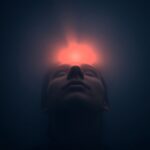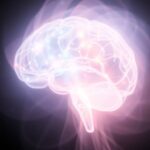As part of Stage 1 study in AtR, I got to overview the fundamentals of Chan Buddhism. Chan is a school of Mahayana Buddhism that developed in China during the Tang dynasty, later spreading to Japan (where it became Zen), Korea (Seon), and Vietnam (Thiền). Its philosophy focuses on meditation, direct insight into one’s nature, and the rejection of rigid dogma or ritual. I definitely see the many parallels(or rather origins) of the practices and notions that I have already studied as part of Zen Buddhism.
The Goal
The main goal of the practices in Chan is to experience wisdom and virtue by leaving behind duality, discrimination, wrong thinking, and attachment. This is done by closely investigating one’s mind and completely perceiving one’s original nature. In order to do that one needs to get completely disentangled from all worldly phenomena and thoughts.
This is a tall order but it is clearly stated that only when thoughts no longer arise, the brightness of self-nature manifests itself completely. At this point in my meditation I am able to get glimpses of thoughtless states but they are still not stable. It takes a careful balance of concentration, relaxation, and intention to abide in that state. The easiest way to get and remain in that state for me has been through the open awareness / Shikantaza type of practice.
I remember how exciting it was to first enter such a state of mind for just a few seconds. These days I can do it for about a few minutes continuously. Still trying to understand what it is that determines the ability to sustain it. Definitely seems like a muscle being trained or a skill so it’s not as simple as just letting it happen. If you don’t keep yourself in the zone you are likely to relax or strain too much and dip back into thoughts.
The Paradoxes
Like in Taoism, there is an emphasis on words being a deception and departure from truth and reality. “The Dharma that is spoken is not the true Dharma.” This paradox always throws me off. The only way I can interpret it is that at a certain point one must leave the vehicle of words behind. Words and concepts are seen as maps, not the territory; they point toward truth but are not the truth itself. This distinction helps highlight a crucial aspect: reality is beyond intellectual grasp and must be directly realized.
It also mentions other contradictory statements like “Everything is already complete. All talk about practice or attainment is demonic deception.” Doesn’t make much sense in terms of all the meditation, self-enquiry, and koans one must contemplate in order to achieve the Buddha realization. This might mean that true nature is inherent and not something to be attained. Practice exists not to create this nature but to remove obstructions (e.g., attachments, wrong thinking) obscuring its realization. The juxtaposition of practice and non-practice reminds us that ultimate realization comes from a profound shift in perspective, not from effort alone.
The Realization
After self-nature is recognized, one is said to navigate everyday life with a unified mind. There is some kind of harmonization with the environment in which one doesn’t get entangled anymore. This comes off effortlessly and without any needed diligence, a complete Buddha state. This is the achievement of the non-dual state, where the mind no longer discriminates, attaches, or grasps at phenomena as separate entities. Everything is perceived as part of an interconnected whole.
The unified mind navigates life spontaneously and harmoniously. Actions flow from a deep alignment with reality rather than being dictated by egoic desires or habitual reactions. The practitioner is neither defiled by nor resistant to the environment / reality as is. In the unified state, entanglements fall away naturally because there is no clinging to transient phenomena.
This state does not require conscious diligence because the habitual tendencies (karma) that create inner turmoil and outward discord have been extinguished. It is often described as “walking, standing, sitting, lying down, always being in meditation,” meaning one’s awareness is integrated into every aspect of life without striving. So you are fully present in everything as everything.
The Nature of Reality
There are some slight distinctions between the terms Buddha-nature and self-nature. Buddha-nature refers to the inherent potential or essence within all sentient beings to attain enlightenment. It is often described as the intrinsic purity, wisdom, and compassion that are the qualities of a Buddha. Despite being obscured by ignorance and delusion, this nature is always present and unchanging.
Self-Nature is a more personal, direct experience of this truth, realized through introspection and meditation. In essence, realizing self-nature means uncovering one’s Buddha-nature. This is the heart of Chan practice: to illuminate the mind and directly perceive this true nature, free from the illusions of ego and duality.
Gongans and Hua-t’ous
Gongans and hua-t’ous are used as a supplementary tool in Chan. Gongans are pretty much the precursor to koans and are used to challenge the practitioner’s rational mind and trigger awakening by presenting situations or questions that cannot be resolved through ordinary logic. A hua-t’ou is a specific aspect or “punchline” of a gongan or koan, often boiled down to a single question or phrase for meditative focus. I have a passion for koans but many traditional koans seem completely beyond the modern context for me.
I’ve been inventing my own koans and collecting koans I like from random sources that include books, forums, conversations. Most of the time they produce a nice mind-stopping effect for me which is helpful for inducing or deepening meditation but I haven’t had an experience of kensho from these yet. My favourite established koan is still “What is this?” and my own is “Where does a wave begin?”.
As with anything, there are levels to the depth of the hua-t’ous practice. When investigating hua-t’ou, the practitioner should first close down all six sense organs and seek where thoughts arise. That’s the base meditation state. Then one concentrates on the hua-t’ou until they see the pure original mind which is apart from thoughts. As this practice deepens, eventually kensho and full awakening follow.
The Great Doubt
The primary mechanism of this awakening using the hua-t’ou is the doubt that it generates. Since one can’t produce an answer to these inquiries, one becomes unsure of what is even being asked. It’s a somewhat distressing state but apparently that is what opens the door to the eventual awakening. One needs to cultivate this doubt until it is self-arising and all-encompassing. The uncertainty and frustration compel the practitioner to dig deeper, much like being unable to stop thinking about a mystery you cannot solve.
Doubt acts as the mechanism that dissolves the practitioner’s attachment to conceptual thinking and the egoic mind. As the tension builds and the practitioner cannot escape the question, there’s a point where the mind reaches its limit and lets go entirely. This is the moment of awakening: the practitioner directly experiences the nature of reality without the filter of words, thoughts, or duality.
The most famous hua-t’ous are:
- Who is dragging this corpse around?
- Who is reciting the Buddha’s name?
- What was my original face before I was born?
- All dharmas return to one; where does this one return?
- What is it?
- Who am I?
The Perseverance
Chan emphasizes the importance of earnestness and perseverance in this type of work. In other words, you must really want to leave the thought generating mind mode behind. And so this yearning should be like a fire burning under you that drives you to redouble your efforts and not let up until the work. I do understand what this talks about as I have felt this drive and that’s what allowed me to stick with exploring and practicing meditation and various energetic practices.
Starting to study and try those is very arduous and demotivating as you don’t know what you are doing, if you are doing anything correctly, what you should be doing next, etc. But throughout the years more and more clarity crystallizes in all these areas. More and more similarities and commonalities are noticed in all the ancient spiritual traditions as they are all pointing towards the same “moon” we are striving to see.



